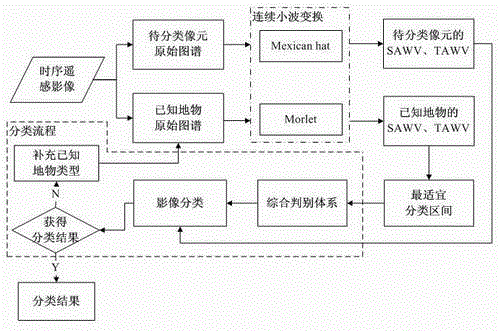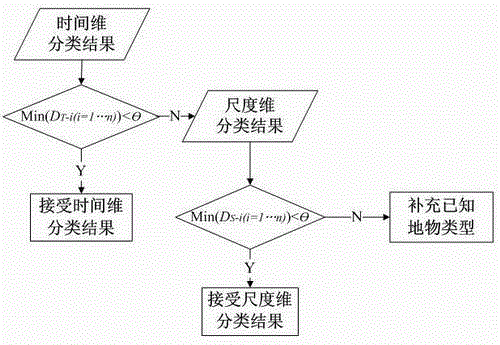Semi-automatic classification method for timing sequence remote sensing images based on continuous wavelet transforms
A wavelet transform, remote sensing image technology, applied in instruments, character and pattern recognition, computer parts and other directions, can solve the problems of affecting classification accuracy and efficiency, unable to extract completely and effectively, limited information dimension, etc., to achieve good robustness With the effect of adaptability, rich information dimension, and high degree of automation
- Summary
- Abstract
- Description
- Claims
- Application Information
AI Technical Summary
Problems solved by technology
Method used
Image
Examples
Embodiment Construction
[0016] The present invention is based on continuous wavelet transform time-series remote sensing image semi-automatic classification method, comprises the following steps:
[0017] Step 1: Based on a series of remote sensing image datasets with time-series changes within a certain time step interval, establish the original maps of the time-series changes in the year for several known ground objects, such as the original maps of the time-series changes in the year for several crops based on the MODIS EVI index. As the prior knowledge and basis for semi-automatic classification of remote sensing images;
[0018] Step 2: Based on the Morlet wavelet and the Mexican hat wavelet respectively, perform continuous wavelet transform on the original map of the time-series variation of the known ground objects within a year, and obtain the wavelet coefficient spectrum based on the Morlet wavelet transform and the wavelet coefficient spectrum based on the Mexican hat wavelet transform; the ...
PUM
 Login to View More
Login to View More Abstract
Description
Claims
Application Information
 Login to View More
Login to View More - R&D
- Intellectual Property
- Life Sciences
- Materials
- Tech Scout
- Unparalleled Data Quality
- Higher Quality Content
- 60% Fewer Hallucinations
Browse by: Latest US Patents, China's latest patents, Technical Efficacy Thesaurus, Application Domain, Technology Topic, Popular Technical Reports.
© 2025 PatSnap. All rights reserved.Legal|Privacy policy|Modern Slavery Act Transparency Statement|Sitemap|About US| Contact US: help@patsnap.com


